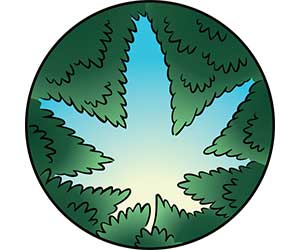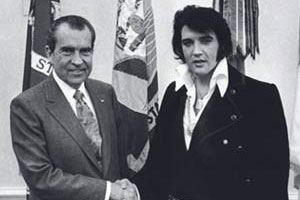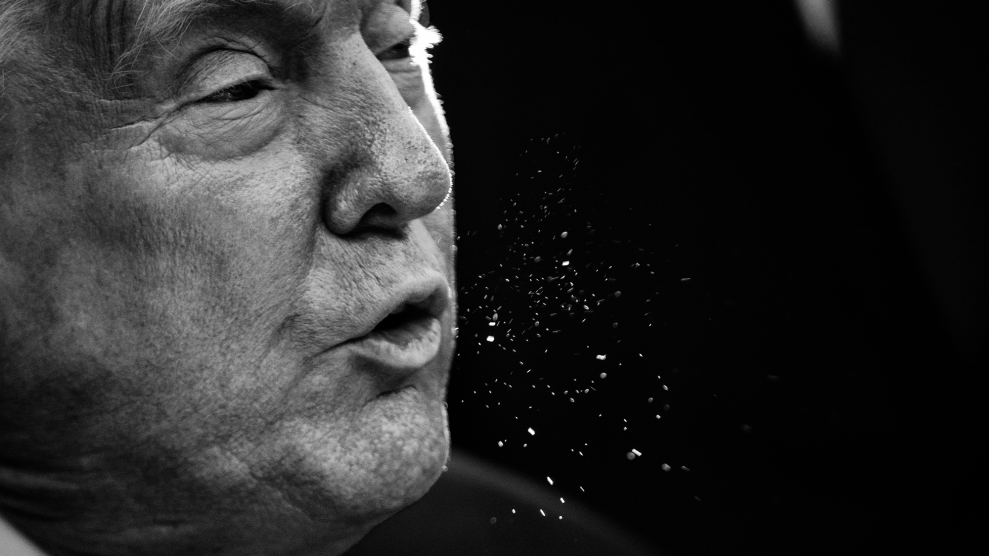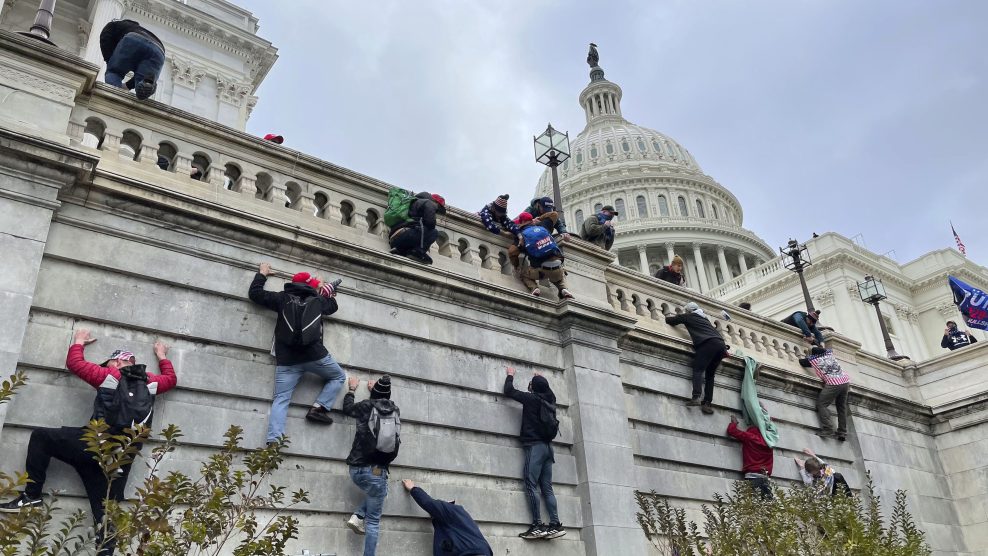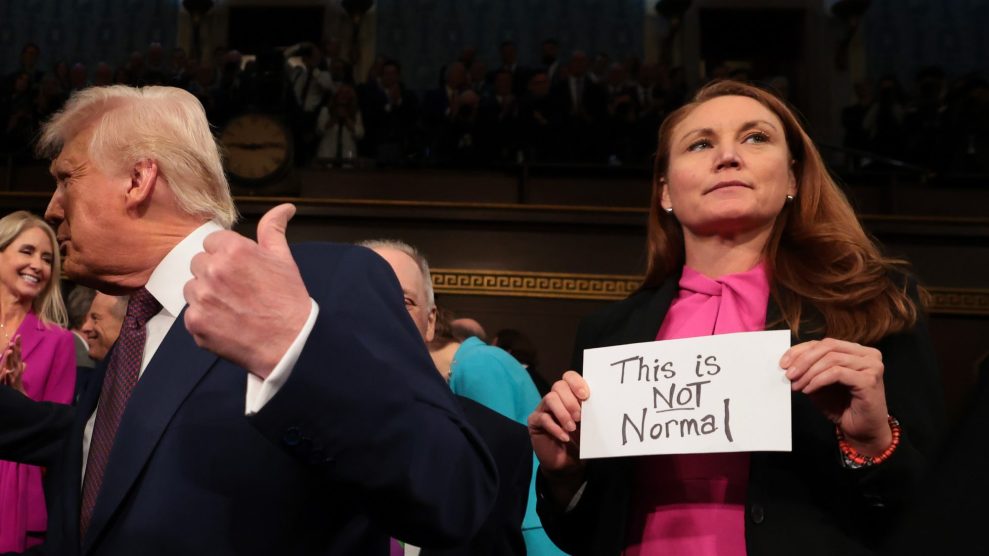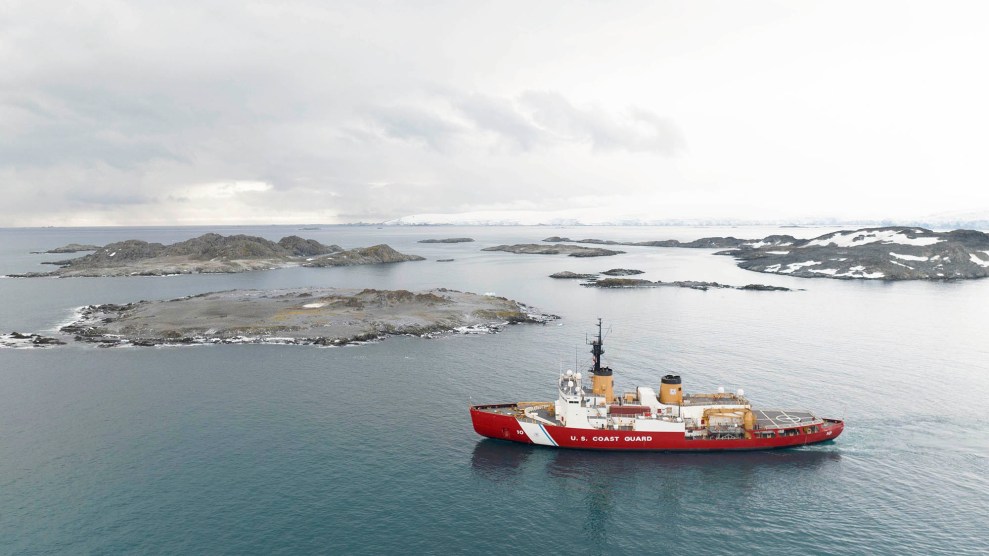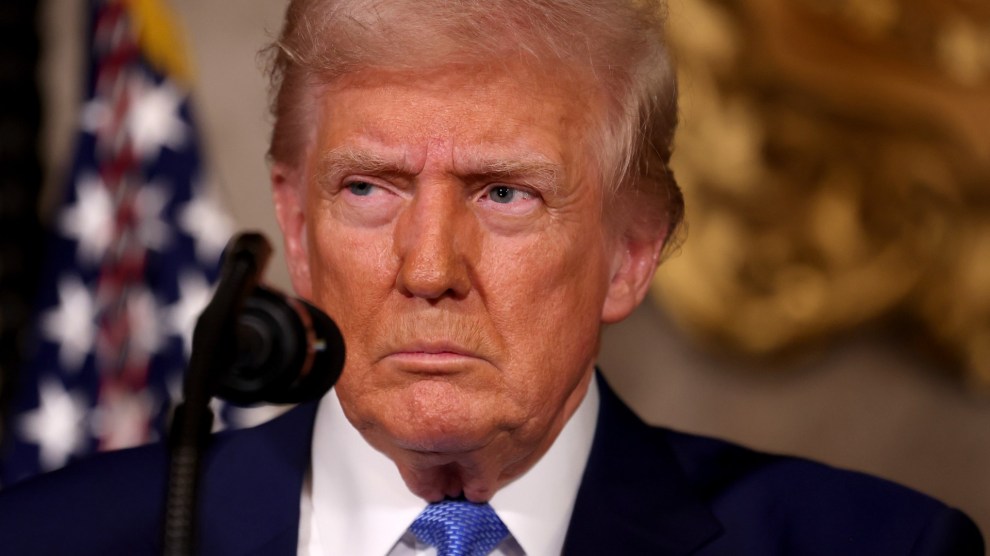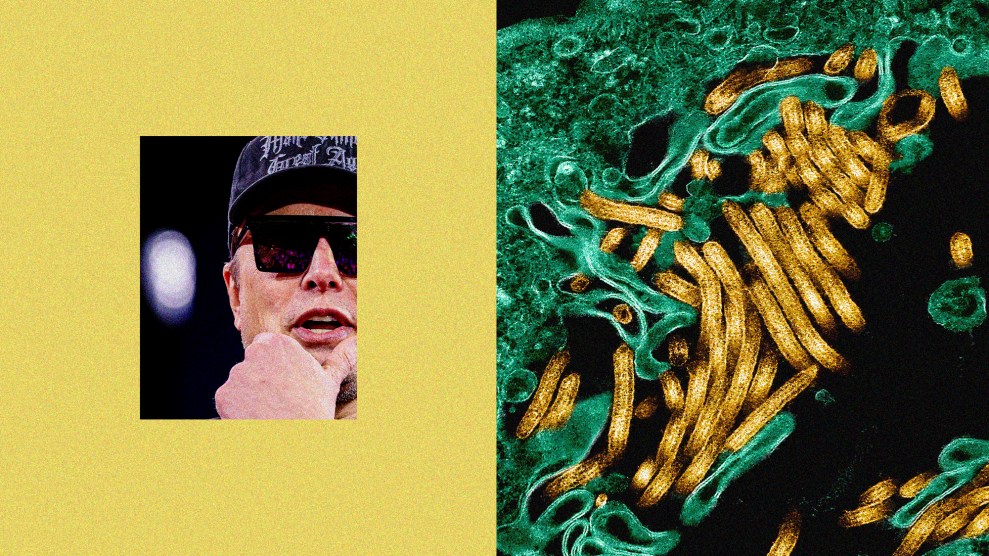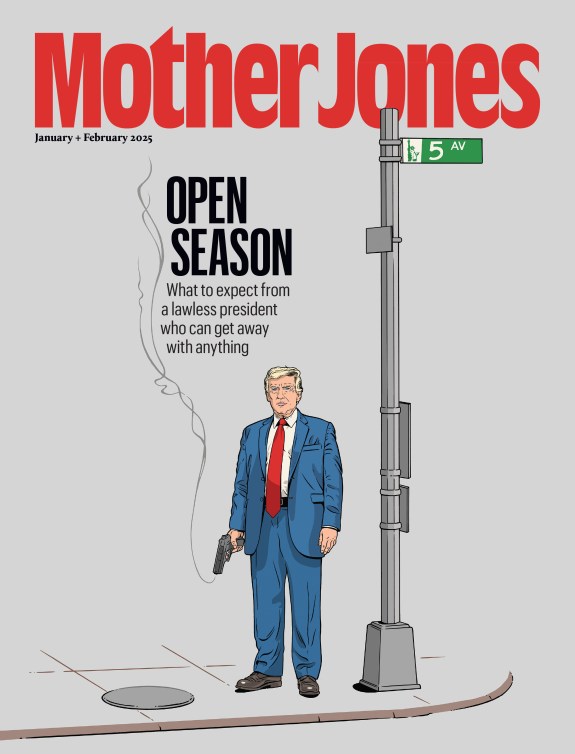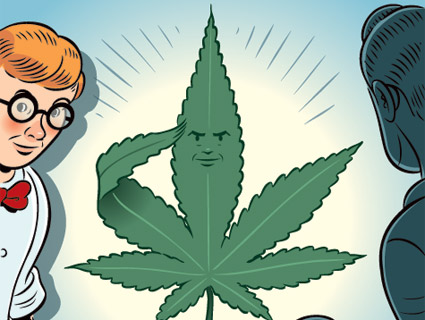
Illustration: Mark Matcho
WHEN WE THINK of the drug war, it’s the heavy-duty narcotics like heroin and cocaine that get most of the attention. And why not? That’s where the action is. It’s not marijuana that is sustaining the Taliban in Afghanistan, after all. When Crips and Bloods descend into gun battles in the streets of Los Angeles, they’re not usually fighting over pot. The junkie who breaks into your house and steals your Blu-ray player isn’t doing it so he can score a couple of spliffs.
No, the marijuana trade is more genteel than that. At least, I used to think it was. Then, like a lot of people, I started reading about the open warfare that has erupted among the narcotraffickers in Mexico and is now spilling across the American border. Stories of drugs coming north and arsenals of guns going south. Thousands of people brutally murdered. Entire towns terrorized. And this was a war not just over cocaine and meth, but marijuana as well.
And I began to wonder: Maybe the war against pot is about to get a lot uglier. After all, in the 1920s, Prohibition gave us Al Capone and the St. Valentine’s Day Massacre, and that was over plain old whiskey and rum. Are we about to start paying the same price for marijuana?
If so, it might eventually start to affect me, too. Indirectly, sure, but that’s more than it ever has before. I’ve never smoked a joint in my life. I’ve only seen one once, and that was 30 years ago. I barely drink, I don’t smoke, and I don’t like coffee. When it comes to mood altering substances, I live the life of a monk. I never really cared much if marijuana was legal or not.
But if a war is breaking out over the stuff, I figured maybe I should start looking at the evidence on whether marijuana prohibition is worth it. Not the spin from the drug czar at one end or the hemp hucksters at the other. Just the facts, as best as I could figure them out. So I did. Here’s what I found.
In 1972, the report of the National Commission on Marihuana and Drug Abuse urged that possession of marijuana for personal use be decriminalized. A small wave of states followed this recommendation, but most refused; in Washington, President Carter called for eliminating penalties for small-time possession, but Congress stonewalled. And that’s the way things have stayed since the late ’70s. Some states have decriminalized, most haven’t, and possession is still a criminal offense under federal law. So how has that worked out?
I won’t give away the ending just yet, but one thing to know is this: On virtually every subject related to cannabis (an inclusive term that refers to both the sativa and indica varieties of the marijuana plant, as well as hashish, bhang, and other derivatives), the evidence is ambiguous. Sometimes even mysterious. So let’s start with the obvious question.
DOES DECRIMINALIZING CANNABIS HAVE ANY EFFECT AT ALL? It’s remarkably hard to tell—in part because drug use is faddish. Cannabis use among teens in the United States, for example, went down sharply in the ’80s, bounced back in the early ’90s, and has declined moderately since. Nobody really knows why.
We do, however, have studies that compare rates of cannabis use in states that have decriminalized vs. states that haven’t. And the somewhat surprising conclusion, in the words of Robert MacCoun, a professor of law and public policy at the University of California-Berkeley, is simple: “Most of the evidence suggests that decriminalization has no effect.”
But decriminalization is not legalization. In places that have decriminalized, simple possession is still illegal; it’s just treated as an administrative offense, like a traffic ticket. And production and distribution remain felonies. What would happen if cannabis use were fully legalized?
No country has ever done this, so we don’t know. The closest example is the Netherlands, where possession and sale of small amounts of marijuana is de facto legal in the famous coffeehouses. MacCoun and a colleague, Peter Reuter of the University of Maryland, have studied the Dutch experience and concluded that while legalization at first had little effect, once the coffeehouses began advertising and promoting themselves more aggressively in the 1980s, cannabis use more than doubled in a decade. Then again, cannabis use in Europe has gone up and down in waves, and some of the Dutch increase (as well as a later decrease, which followed a tightening of the coffeehouse laws in the mid-’90s) may have simply been part of those larger waves.
The most likely conclusion from the overall data is that if you fully legalized cannabis, use would almost certainly go up, but probably not enormously. MacCoun guesses that it might rise by half—say, from around 15 percent of the population to a little more than 20 percent. “It’s not going to triple,” he says. “Most people who want to use marijuana are already finding a way to use marijuana.”
Still, there would be a cost. For one thing, a much higher increase isn’t out of the question if companies like Philip Morris or R.J. Reynolds set their finest minds on the promotion of dope. And much of the increase would likely come among the heaviest users. “One person smoking eight joints a day is worth more to the industry than fifty people each smoking a joint a week,” says Mark Kleiman, a drug policy expert at UCLA. “If the cannabis industry were to expand greatly, it couldn’t do so by increasing the number of casual users. It would have to create and maintain more chronic zonkers.” And that’s a problem. Chronic use can lead to dependence and even long-term cognitive impairment. Heavy cannabis users are more likely to be in auto accidents. There have been scattered reports of respiratory and fetal development problems. Still, sensible regulation can limit the commercialization of pot, and compared to other illicit drugs (and alcohol), its health effects are fairly mild. Even a 50 percent increase in cannabis use might be a net benefit if it led to lower rates of use of other drugs.
SO WOULD PEOPLE JUST SMOKE MORE AND DRINK LESS? Maybe. The generic term for this effect in the economics literature is “substitute goods,” and it simply means that some things replace other things. If the total demand for transportation is generally steady, an increase in sales of SUVs will lead to a decrease in the sales of sedans. Likewise, if the total demand for intoxicants is steady, an increase in the use of one drug should lead to a decrease in others.
Several years ago, John DiNardo, an economist now at the University of Michigan, found a clever way to test this via a natural experiment. Back in the 1980s, the Reagan administration pushed states to raise the drinking age to 21. Some states did this early in the decade, some later, and this gave DiNardo the idea of comparing data from the various states to see if the Reagan policy worked.
He found that raising the drinking age did lead to lower alcohol consumption; the effect was modest but real. But then DiNardo hit on another analysis—comparing cannabis use in states that raised the drinking age early with those that did it later. And he found that indeed, there seemed to be a substitution effect. On average, among high school seniors, a 4.5 percent decrease in drinking produced a 2.4 percent increase in getting high.
But what we really want to know is whether the effect works in the other direction: Would increased marijuana use lead to less drinking? “What goes up should go down,” DiNardo told me cheerfully, but he admits that in the absence of empirical evidence this hypothesis depends on your faith in basic economic models.
Some other studies are less encouraging than DiNardo’s, but even if the substitute goods effect is smaller than his research suggests—if, say, a 30 percent increase in cannabis use led to a 5 or 10 percent drop in drinking—it would still be a strong argument in favor of legalization. After all, excessive drinking causes nearly 80,000 deaths per year in the United States, compared to virtually none for pot. Trading alcohol consumption for cannabis use might be a pretty attractive deal.
BUT WHAT ABOUT THE GATEWAY EFFECT? This has been a perennial bogeyman of the drug warriors. Kids who use pot, the TV ads tell us, will graduate to ecstasy, then coke, then meth, and then—who knows? Maybe even talk radio.
Is there anything to this? There are two plausible pathways for the gateway theory. The first is that drug use of any kind creates an affinity for increasingly intense narcotic experiences. The second is that when cannabis is illegal, the only place to get it is from dealers who also sell other stuff.
The evidence for the first pathway is mixed. Research in New Zealand, for example, suggests that regular cannabis use is correlated with higher rates of other illicit drug use, especially in teenagers. A Norwegian study comes to similar conclusions, but only for a small segment of “troubled” teenagers. Other research, however, suggests that these correlations aren’t caused by gateway effects at all, but by the simple fact that kids who like drugs do drugs. All kinds of drugs.
The second pathway was deliberately targeted by the Dutch when they began their coffeehouse experiment in the ’70s in part to sever the connection of cannabis with the illicit drug market. The evidence suggests that it worked: Even with cannabis freely available, Dutch cannabis use is currently about average among developed countries and use of other illicit drugs is about average, too. Easy access to marijuana, outside the dealer network for harder drugs, doesn’t seem to have led to greater use of cocaine or heroin.
So, to recap: Decriminalization of simple possession appears to have little effect on cannabis consumption. Full legalization would likely increase use only moderately as long as heavy commercialization is prohibited, although the effect on chronic users might be more substantial. It would increase heroin and cocaine use only slightly if at all, and it might decrease alcohol consumption by a small amount. Which leads to the question:
CAN WE STILL AFFORD PROHIBITION? The consequences of legalization, after all, must be compared to the cost of the status quo. Unsurprisingly, this too is hard to quantify. The worst effects of the drug war, including property crime and gang warfare, are mostly associated with cocaine, heroin, and meth. Likewise, most drug-law enforcement is aimed at harder drugs, not cannabis; contrary to conventional wisdom, only about 44,000 people are currently serving prison time on cannabis charges—and most of those are there for dealing and distribution, not possession.
Still, the University of Maryland’s Reuter points out that about 800,000 people are arrested for cannabis possession every year in the United States. And even though very few end up being sentenced to prison, a study of three counties in Maryland following a recent marijuana crackdown suggests that a third spend at least one pretrial night in jail and a sixth spend more than ten days. That takes a substantial human toll. Overall, Harvard economist Jeffrey Miron estimates the cost of cannabis prohibition in the United States at $13 billion annually and the lost tax revenue at nearly $7 billion.
SO WHAT ARE THE ODDS OF LEGALIZATION? Slim. For starters, the United States, along with virtually every other country in the world, is a signatory to the 1961 Single Convention on Narcotic Drugs (and its 1988 successor), which flatly prohibits legalization of cannabis. The only way around this is to unilaterally withdraw from the treaties or to withdraw and then reenter with reservations. That’s not going to happen.
At the federal level, there’s virtually no appetite for legalizing cannabis either. Though public opinion has made steady strides, increasing from around 20 percent favoring marijuana legalization in the Reagan era to nearly 40 percent favoring it today, the only policy change in Washington has been Attorney General Eric Holder’s announcement in March that the Obama administration planned to end raids on distributors of medical marijuana. (Applications for pot dispensaries promptly surged in Los Angeles County.)
The real action in cannabis legalization is at the state level. More than a dozen states now have effective medical marijuana laws, most notably California. Medical marijuana dispensaries are dotted all over the state, and it’s common knowledge that the “medical” part is in many cases a thin fiction. Like the Dutch coffeehouses, California’s dispensaries are now a de facto legal distribution network that severs the link between cannabis and other illicit drugs for a significant number of adults (albeit still only a fraction of total users). And the result? Nothing. “We’ve had this experiment for a decade and the sky hasn’t fallen,” says Paul Armentano, deputy director of the National Organization for the Reform of Marijuana Laws. California Assemblyman Tom Ammiano has even introduced a bill that would legalize, tax, and regulate marijuana; it has gained the endorsement of the head of the state’s tax collection agency, which informally estimates it could collect $1.3 billion a year from cannabis sales. Still, the legislation hasn’t found a single cosponsor, and isn’t scheduled for so much as a hearing.
Which is too bad. Going into this assignment, I didn’t care much personally about cannabis legalization. I just had a vague sense that if other people wanted to do it, why not let them? But the evidence suggests pretty clearly that we ought to significantly soften our laws on marijuana. Too many lives have been ruined and too much money spent for a social benefit that, if not zero, certainly isn’t very high.
And it may actually happen. If attitudes continue to soften; if the Obama administration turns down the volume on anti-pot propaganda; if medical dispensaries avoid heavy commercialization; if drug use remains stable; and if emergency rooms don’t start filling up with drug-related traumas while all this is happening, California’s experience could go a long way toward destigmatizing cannabis use. That’s a lot of ifs.
Still, things are changing. Even GOP icon Arnold Schwarzenegger now says, “I think it’s time for a debate.” That doesn’t mean he’s in favor of legalizing pot right this minute, but it might mean we’re getting close to a tipping point. Ten years from now, as the flower power generation enters its 70s, you might finally be able to smoke a fully legal, taxed, and regulated joint.

